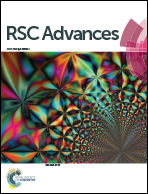Cathodic voltage-dependent composition, microstructure and corrosion resistance of plasma electrolytic oxidation coatings formed on Zr-4 alloy
Abstract
Plasma electrolytic oxidation (PEO) coatings are fabricated on Zr-4 alloy by a pulsed bipolar power supply. When the anodic voltage remains constant, the variation of cathodic voltage exhibits a significant impact on the microstructure and corrosion resistance of the oxide coatings. Here we systematically investigate the influence of cathodic voltage on the phase composition, morphology, thickness, and elemental composition of the PEO coatings. Corrosion behaviors are evaluated by electrochemical impedance spectroscopy (EIS). The coating thickness and the electrolyte borne elements incorporated in the coatings both increase with the increase of cathodic voltage. It is interesting to note that the relative content of tetragonal ZrO2 and monoclinic ZrO2 also shows a strong cathodic voltage dependence. The coating formed at 50 V cathodic voltage shows the most compact microstructure with the largest amount of tetragonal ZrO2 and correspondingly exhibits the optimized corrosion resistance. The presence of t-ZrO2 is found to be beneficial for dense oxide coatings and better corrosion resistance. Therefore, cathodic voltage is an important parameter during PEO process to adjust the microstructure and the corrosion resistance performance of PEO coatings.


 Please wait while we load your content...
Please wait while we load your content...